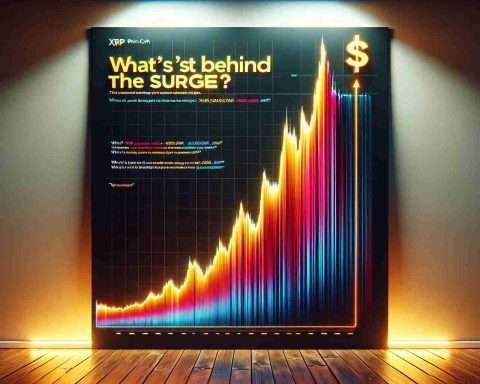Elon Musk, also known for his leadership at Tesla, is now steering a new initiative within the government aimed at cutting expenses significantly. In his role at the Department of Government Efficiency (DOGE) established during the second Trump administration, Musk is investigating the potential of blockchain technology to streamline operations within federal agencies.
Recent developments indicate that Musk’s research involves comprehensive discussions surrounding the integration of blockchain for various functions, including tracking government expenditures, enhancing data security, processing payments, and managing buildings. Reports suggest that DOGE has engaged with representatives from several public blockchain networks to examine their capabilities.
The connection of DOGE to the popular cryptocurrency Dogecoin is noted as a fitting backdrop for these discussions. Established to overhaul federal technology and software systems, DOGE collaborates closely with the White House Office of Management and Budget (OMB) to devise strategies aimed at reducing government spending, with proposals expected by July next year.
While utilizing blockchain in large-scale operations isn’t entirely innovative, its application within the extensive framework of the U.S. government is relatively new territory. Should DOGE proceed with these initiatives, it has the potential to be the most significant government technology project in American history, marking a bold step into a new era of efficiency.
The Broader Implications of Blockchain in Government Efficiency
The exploration of blockchain technology under the auspices of the Department of Government Efficiency (DOGE) may well signify a transformative shift in the intersection of technology and governance. As the U.S. navigates increasing expenditures and calls for transparency, this initiative reflects a growing societal demand for greater accountability in public spending. By harnessing blockchain, a technology that ensures immutable records and enhanced security, the government takes a step toward building trust with citizens disillusioned by bureaucratic inefficiency.
This initiative also speaks to the cultural evolution of how technology can reshape institutions. As private sectors increasingly adopt decentralized finance and digital assets, the public sector risks lagging behind if it does not evolve. The integration of blockchain could not only reshape administrative processes but also inspire similar reforms globally, highlighting the U.S. as a potential leader in digital governance.
Moreover, this shift could have long-term environmental effects. By streamlining government operations, agencies could become more resource-efficient, leading to reduced carbon footprints associated with paper trails and inefficient practices. Future trends may include expanded use of artificial intelligence and machine learning in conjunction with blockchain, paving the way for smarter decision-making frameworks.
Ultimately, if successful, DOGE’s initiatives could mark a pivotal moment in government history—facilitating a paradigm shift that prioritizes efficiency, transparency, and sustainability for years to come.
Elon Musk’s Blockchain Initiative: Revolutionizing Government Efficiency
Introduction
Elon Musk, known for his entrepreneurial ventures, is at the forefront of a transformative project within the U.S. government that could reshape its operations through the integration of blockchain technology. His involvement with the Department of Government Efficiency (DOGE) aims to streamline federal agencies and significantly cut down on expenses.
Use Cases for Blockchain in Government
Blockchain technology presents a wide array of applications tailored for government operations. Some potential use cases that DOGE is exploring include:
– Tracking Government Expenditures: By leveraging blockchain, the government can create transparent and tamper-proof records of expenditures, ensuring that funds are allocated and spent appropriately.
– Enhancing Data Security: Blockchain’s decentralized nature can bolster the security of sensitive government data, protecting it against breaches and unauthorized access.
– Processing Payments: The initiative could pave the way for faster and more secure payment processes within government transactions.
– Managing Buildings: Smart contracts could be utilized for efficient management of government properties, allowing for automated processes in maintenance and leasing agreements.
Innovations and Features of DOGE
The establishment of DOGE marks a significant shift in how technology is approached within the federal landscape. Key features of this initiative include:
– Collaboration with Public Blockchain Networks: DOGE is actively engaging with representatives from various public blockchain platforms to assess their capabilities for government applications.
– Alignment with Recent Trends in Tech: The project aligns with the rising trend of adopting digital currencies and blockchain in various sectors, providing a modern approach to age-old bureaucratic processes.
Pros and Cons of Implementing Blockchain
# Pros
– Increased Transparency: Blockchain can enhance visibility of government spending, instilling public trust.
– Cost Reduction: Streamlined processes can lead to significant savings and increase efficiency.
– Improved Security: Blockchain technology has inherent security benefits that protect governmental data.
# Cons
– Implementation Challenges: Transitioning to a blockchain-based system may face resistance and operational challenges.
– Public Skepticism: The connection to cryptocurrencies like Dogecoin may create skepticism regarding the initiative’s seriousness and stability.
Market Analysis and Trends
The push towards adopting blockchain in governmental operations reflects a broader trend in technology. Organizations globally are opting for decentralized solutions to enhance efficiency and accountability. If successful, DOGE may set a precedent for other countries to follow.
Future Predictions and Insights
Experts predict that should the DOGE initiative yield positive results, it could lead to broader acceptance of blockchain technology across federal and state agencies. Furthermore, this could spur innovations in digital governance and increase investment in blockchain solutions from both the public and private sectors.
Conclusion
Elon Musk’s role in DOGE positions him to potentially influence one of the largest government technology projects in U.S. history. As discussions continue and proposals are developed, the impact of blockchain technology on government operations could represent a pivotal shift towards efficiency and transparency.
For further updates and insights into technology in government, visit GovTech.












